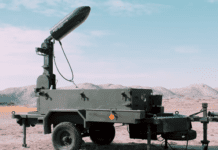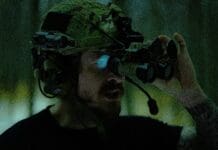
This post is also available in:
 עברית (Hebrew)
עברית (Hebrew)
Advanced technology can aid soldiers make better-informed decisions in real-time at various battlefield environments. The U.S. Army is now looking for products and technologies that enable soldiers to see through walls, floors and ceilings to positively identify individuals using biometrics and in real-time.
The DoD is interested in potential man-portable systems that give the Soldier the ability to detect, identify, and monitor persons, animals, and materials behind multi-leveled obstructions from a long standoff range. The sensor system will also be able to map the structure and detect hidden rooms, passages, alcoves, caches, etc. including those underground.
The DoD request for information for a Sense Through the Wall (STTW) System
was issued on January 29. The system should be able to track, locate, isolate, range, and count personnel and animals in a building or structure. This includes rapidly discriminating between friend and foe, classification of activities such as sitting, standing, walking, or lying down, and even Positive Identification of personnel (PID) via biometric data.
The system must be able to detect and classify various materials and objects in the structure. This will include items common in building clearing operations: tripwires, IED’s and explosives, weapons and ammunition, and other traps. STTW will also be able to classify and characterize the material(s) of the barriers, walls, infrastructures, etc. that it is sensing through.
According to biometricupdate.com, the Army’s vision is to put a tablet in a soldier’s hands that gives them a 360-degree view through dense vegetation, common construction materials and dirt to identify threats, hiding places, etc.
The system behind the tablet must be portable by a single soldier and operate on batteries. The system should be able to be mounted on air and ground drones, as well.
It is not the first time that a government agency, domestic or otherwise, has sought ways to pick out people through solid structures, but it might be the most ambitious wish list of capabilities. Six years ago, the U.S. Department of Justice tested and evaluated through-the-wall-sensors from several vendors. In 2018, researchers at the Massachusetts Institute of Technology said they had developed a neural network capable of using WiFi radio signals to estimate human poses through walls.
Interested in learning more about ground-breaking sensing systems? Attend i-HLS’s InnoTech Expo in Tel Aviv – Israel’s largest innovation, HLS, and cyber technologies expo – on November 18-19, 2020 at Expo Tel Aviv, Pavilion 2.
























